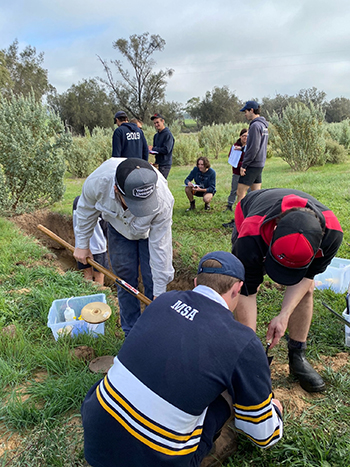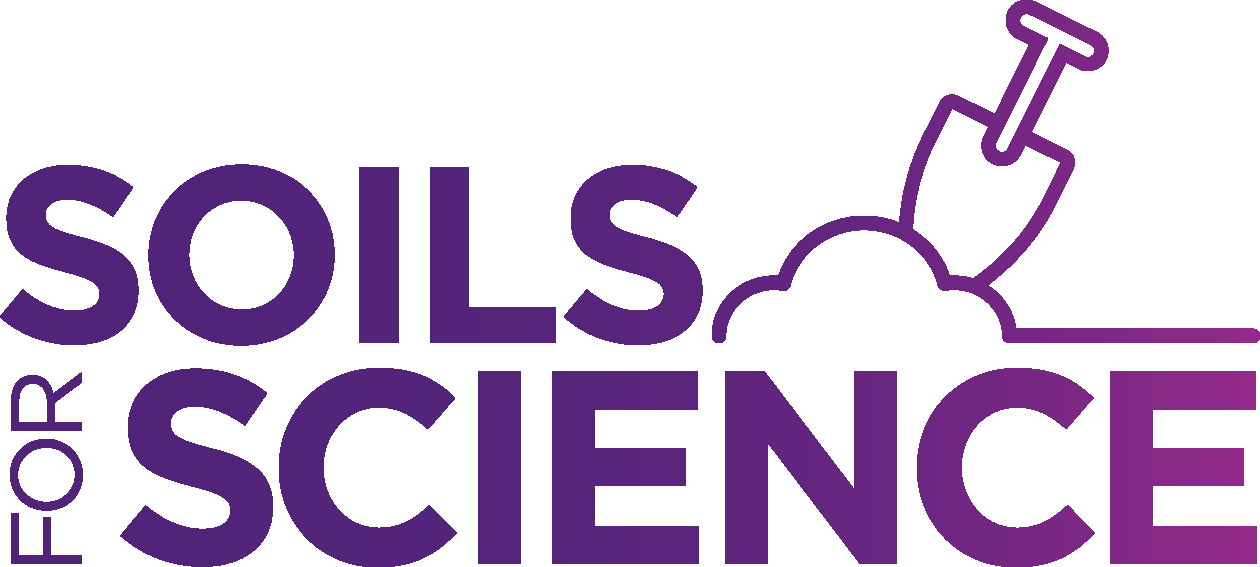Thousands of Australians dig deep to fight the war on superbugs
Citizen scientists across Australia are digging deep, collecting more than 7,500 soil samples for The University of Queensland Institute for Molecular Bioscience’s (IMB) Soils for Science program.
Soil samples are mined for microbes to help UQ scientists and other researchers across the world discover and develop new antibiotics to fight drug-resistant infections, known as superbugs, for decades to come.
IMB Professorial Research Fellow Rob Capon said more than 8,000 soil samples are registered in the Soils for Science mobile app, with over 7,500 already returned to IMB.
The app’s geotagging feature reveals 5,569 samples were collected from urban locations, 1,172 from rural locations and 746 came from native sites.
“We’ve had some 7,000 samples from Queensland, but samples have come from every state in Australia,” Professor Capon said.

“Even though we didn’t go in hard as an Australia-wide program, it didn’t stop people everywhere from Hobart to Perth to Darwin from requesting kits and collecting.”
Soils for Science launched in March 2021 and even in these early stages, Prof Capon is confident eager public participation will provide a wealth of essential research material.
“Based on our past experience, there is no doubt new antibiotics will be discovered,” he said.
“The challenge is: will those antibiotics have the properties necessary to make it through development and into clinical use? And that’s something we won’t know for a few years yet.
“What is pretty clear is that the diversity of samples is tremendous.”
Participants can find out what’s living in their dirt by visiting the Soils for Science gallery to see high-resolution photos of all samples during various stages of microbial growth.
“Because we take very high-resolution images, you can zoom in a long way and look at the microbes close-up and pan around to look at different parts of the plate at up to 16x or 30x magnification.

“We take a high-resolution photograph that is uploaded to our web gallery, where the public can search for the code to their soil sample and see a picture of the microbes living in their backyard,” Prof Capon said.
“It’s like you’ve got your own microscope looking at your soil sample,” he explained.
Everyone who submits a soil sample plays a key role in a valuable campaign against infectious diseases, which are becoming increasingly resistant to current antibiotics.
The long-term goal of Soils for Science is to collect 100,000 soil samples and build a vast library to sustain future research and development.
“The soil microbes are all cryo-preserved and immortalised as a resource for future science,” Prof Capon explained.
“We can bring them back to life any time – this week or in 10 years or 100 years – making them a perpetual asset that can fuel the search for new antibiotics well into the future.”
Prof Capon and his team specialise in studying molecules that occur in nature – known as natural products – to understand what they are and how they work to inspire solutions to important problems in science, medicine and agriculture.
By sourcing 100,000 soil samples, the Soils for Science team hopes to recover more than two million microbes, which would give access to more than 10 million natural products.
“One of the more pressing problems is antibiotic resistance and the need for new antibiotics,” Prof Capon said.
“Soils for Science was created to help fast-track solutions by teaming up with the public aka citizen scientists to access soil samples from a wide array of locations across Queensland and Australia.
“Lots of soil samples means lots of microbial diversity, which in turn means lots of natural products to inspire the discovery of next-generation antibiotics and other life-saving medicines,” Prof Capon explained.
“That means we get access to vastly more potential microbial diversity that’s living in those soils.“

Just to put that into context: scientists have been discovering and studying natural products for more than 100 years, kicked along by the discovery of penicillin early last century,” Prof Capon said.
“In that time, the total number of natural products described by science is less than 500,000.”
Prof Capon sees Soils for Science as a valuable resource that is based at IMB but accessible to researchers across Australia and the world.
“To fully explore the potential of Soils for Science is not something that I’m going to achieve in my lifetime, it’s not something any one researcher or institute is going to achieve – we need to cooperate and be prepared to share to succeed, ” he said.
“Soils for Science is about bringing the public along on the journey to help build a resource that will be attractive to academic and industry researchers alike – build it and they will come.
“We are confident that Soils for Science will lay the groundwork to build a resource that will attract future interest and investment, inspiring important discoveries that will benefit all.”

Help us find the next antibiotic

